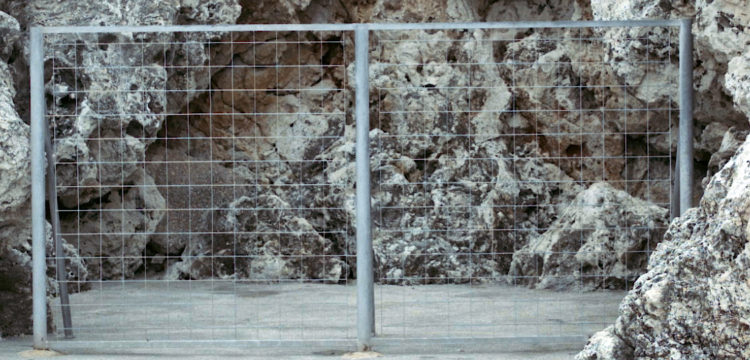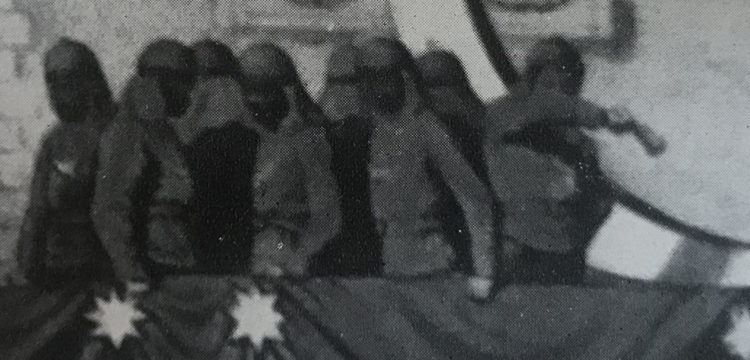Black Med Magma
Invernomuto and the continuous trajectories of the black Mediterranean sounds
Initiated by Invernomuto in 2018, Black Med is a platform that intercepts the trajectories of sound through the Mediterranean sea, once understood as a fluid entity aiding the formation of networks and exchange, and now the scenario of a humanitarian crisis and geopolitical dispute.
Recently the project has moved online where an algorithm is able to play the tracks and broadcast them in an endless stream. The archive consists of music and sounds selected by Invernomuto and a network of contributors who were invited at different stages since the inception of the project. The system is open and anyone can upload new sounds into it.
Giulia Crispiani: Since it has been quite a journey so far, and Black Med has been changing and adapting to different formats and presentation modes, maybe it’s worth it to leap back to where and how did it start?
Invernomuto: Black Med is actually spinning around our heads since years: going fast backwards, at the very beginning it was supposed to be the title of an EP by STILL (Simone Trabucchi’s musical outlet). The idea of working around the notion of a Black Mediterranean came after an essay by scholar Alessandra di Maio, titled Mediterraneo nero. Le rotte dei migranti nel millennio globale, who started to elaborate on this concept around 2012. Our intention has always been to start from that theoretical framework and navigate it through music and sound, by activating a network of thinkers, artists and friends that could contribute to what has now become a vast online archive of musical objects.
Anyway, the project’s actual kick off was at Manifesta12 in Palermo, where we did not present any physical or tangible piece for the show, but a series of online commissions and listening sessions at Teatro Garibaldi, the biennial headquarter that year. Black Med listening sessions are based on a DJ set accompanied by a series of projected slides with theoretical texts and backstories referring to the musical pieces, which are grouped by elegiac themes. So far, we have produced seven chapters, each one dedicated to a different section of the research. In general terms they explore different journeys throughout multiple trajectories and chronologies of sound around the protean area of the Mediterranean.
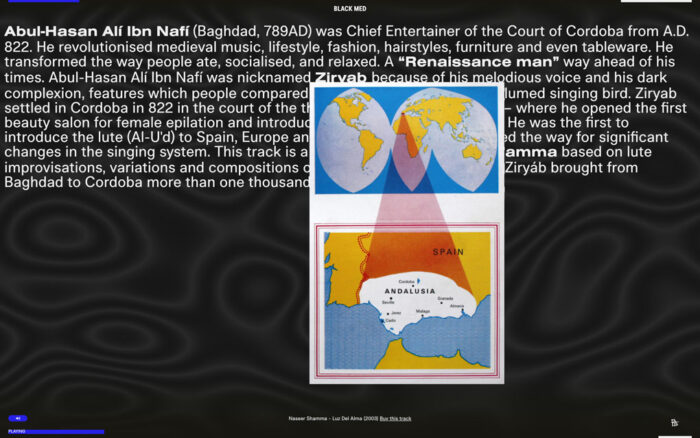
From that intuition to a continuous archive mixed by the algorithm. Continuity for me is one of the most important concepts in this specific archival work. Where institutional imagination fails to consider the Mediterranean Sea as a connector—quoting from your statement “where Africa does (not) meet Italy”—this fluid archive embeds and carries mutual influences and creates a space of exchange which can never be fixed. Is that so?
Absolutely. And it shouldn’t be fixed. We questioned ourselves quite a lot when deciding if an algorithm was the right vehicle to carry this idea of continuity—and in the end, it does. Whenever you upload a new track into the archive it gets into the flux, it can be played immediately or after a few days, in this sense it’s hard to fix, it stays fluid by definition. The user cannot really interact with it except for listening, watching, reading or deciding to expand it by uploading new content. Compared to other corporate streaming platforms, the aim is not to profile and control the habits of the user, but, on the contrary to propose an ever expanding stream that, in the words of Iain Chambers, “return us to our senses, reach into memories, sustain desires, futures.”
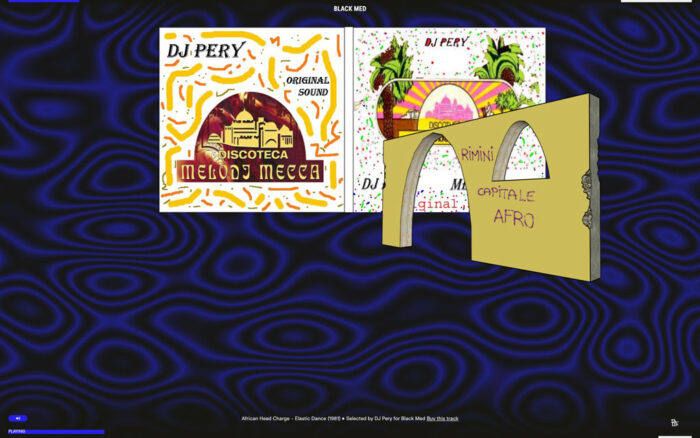
Indeed this continuity keeps on being implemented by a network of contributors. How was this network built and what does it mean to open this system to anyone?
The network is mainly built on an “elective affinities” basis. We have invited musicians, researchers and scholars with a particular sensitivity to the sonic worlds of the Mediterranean, both from a contemporary and historical perspective. The commissions—in the form of a mix—were intended for the first version of blackmed.invernomuto.info, but in the next months we’ll continue with this process by asking to upload a selection of tracks into the archive. Black Med is conceived as a choral project, so to enrich its output we need as many inputs as possible—that’s the main reason behind the choice of opening up the system to anyone. Of course we filter each contribution: we need to accept, categorize and tag each file for it to be digested by the algorithm.
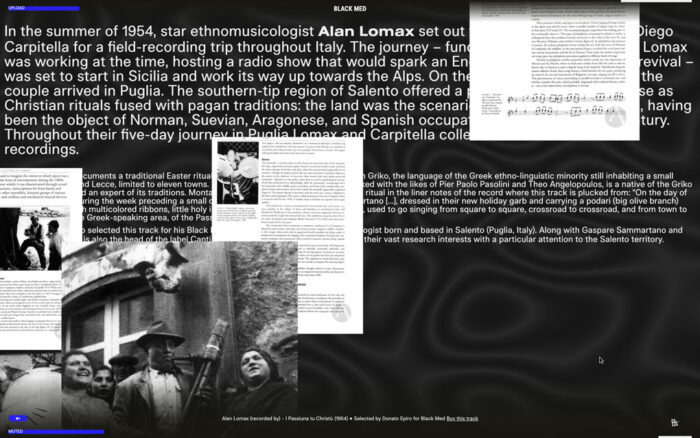
The website is now a combination of video and sound, whilst some tracks keep the form of the listening sessions—when Black Med was presented in chapters—for those who upload, are there any specific requests?
Together with an audio file (i.e. song, field recording, loop, sonic interference or weapon) you can upload related visual content and an introductory or poetic text. There is no specific request except for the relevance for the project’s concept and premises. There is also the possibility of adding a link to buy the digital/physical copy of the song or album. We are still thinking about a new feature for the upload section where—in case of mobile access—instead of uploading a file you can actually record with the internal microphone of your device, as a diverse and more immediate practice of field recording.
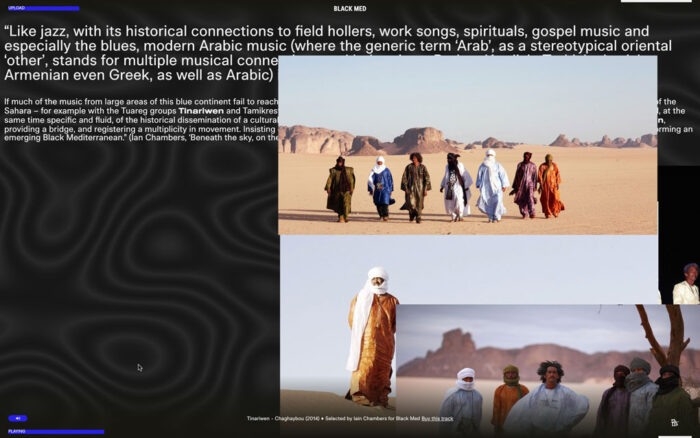
Are there any specific geographical trajectories?
The project is overtly non-geographical. But of course there are trajectories, partly related to some phases of the research, partly connected to the contributors and their respective belonging scenes. The 7th chapter of the listening sessions for instance was commissioned by the 58th October Salon/Belgrade Biennale—and contains a focus on the Balkan area; or the 4th, which we developed during a residency at Alserkal Avenue in Dubai—and mainly considers the Mediterranean from an Eastern perspective. In general terms though, we tend to include musical tracks that already contain several geographical directions—and it is not only related to the Mediterranean area per se, but also other types of Mediterraneans: faraway, imagined and yet to come.
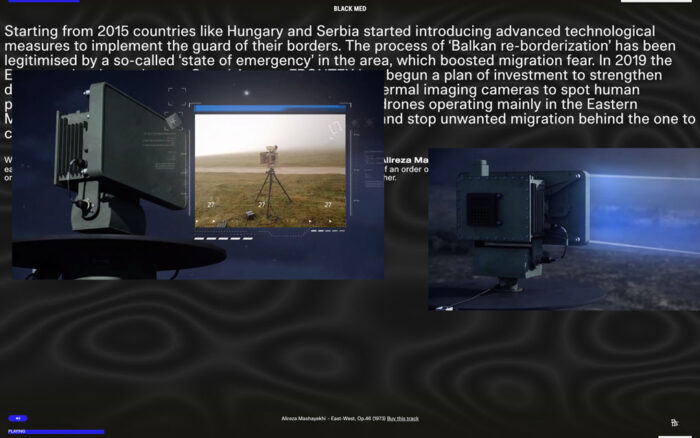
Will the archive keep on existing outside of the digital world? In which forms?
Sure, in its installative manifestations. Recently it has been presented at the Archeological Park of Pompeii as Black Med, POMPEII. The work—supported by the Italian Council (7th Edition, 2019), Fondazione Morra Greco and Pompeii Commitment—had a double output: a sound installation in the Casa degli Amorini Dorati and an intervention in Via Marina/Foro.
The first was based on a section from the archive called SEASCAPE, which contains tracks from different times and genres, sharing lush sound textures; played through four flexible speakers, the intervention aimed to furnish the spaces and expand some of the symbology present in the Casa, such as its Egyptological references, in particular related to the cult of Isis. In Via Marina/Foro, the intervention diffused the output of the algorithm, six times a day for ten minutes each time, as if it was a call to inner reflection, a way to beat time and become aware of it.
Apart from the listening sessions, which had been and will continue to be the performative output of the project, we are planning other iterations of the work in the physical world, by expanding both the content of the platform and its media into a submersive audio visual installation.
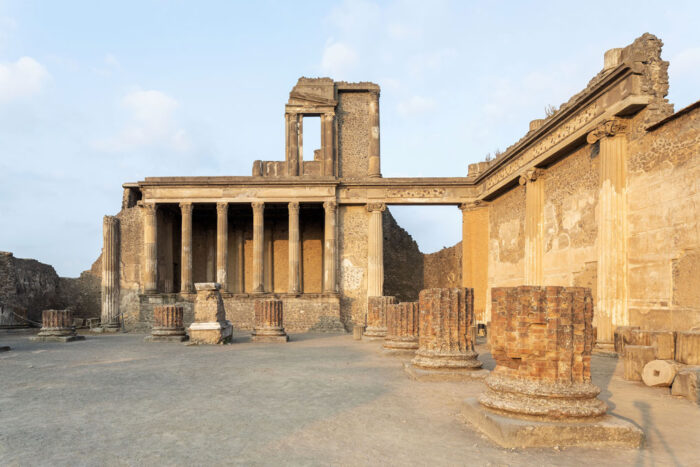
More on a personal reflection, I often have to think how absurd it is that we grew up way more influenced by North American culture—both musical and visual—while all our bonds with other Mediterranean countries were clearly cut—if not even turned into some sort of exotic dream or even phobia. Can we speak of “repairing” this proximity?
The Mediterranean as it was built and imagined in the Western world in the last century was indeed looking North, by considering only its European shore. In fact, it’s not just that it has a top, but it is also partly Asian and consistently African—and browsing through history this is just a matter of fact. The aim of Black Med is to reconsider the Mediterranean from another perspective, widely open and diverse, instilling a different sense of belonging.
North American culture has been the main influence on pop-culture (in the widest sense possible) since the 1950’s for obvious political reasons. What is happening in the black Mediterranean is not denying those influences, instead it’s an observation on how they’ve evolved into something different and peculiar. We don’t see culture—and sound is an infectious way of how culture propagates—as a fixed object but as a sponge that keeps mutating, absorbing things and changing shapes.




